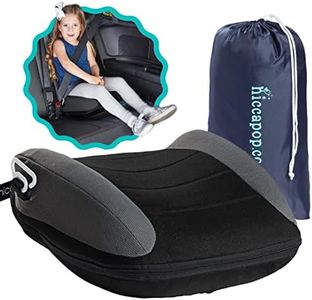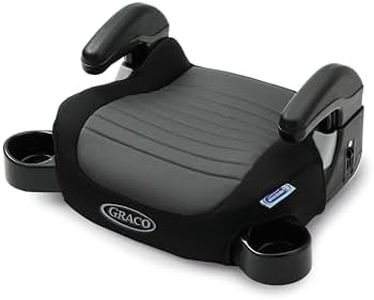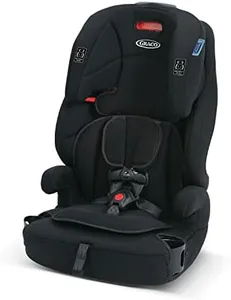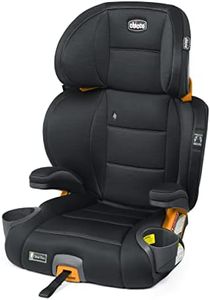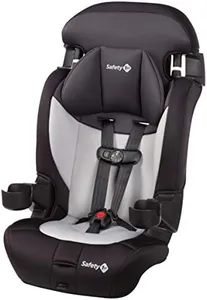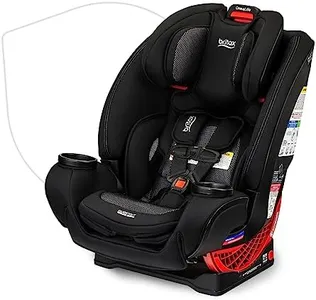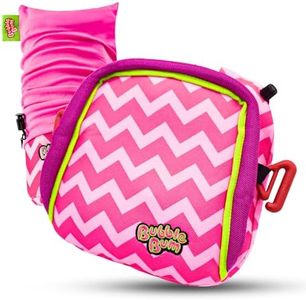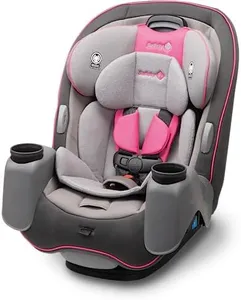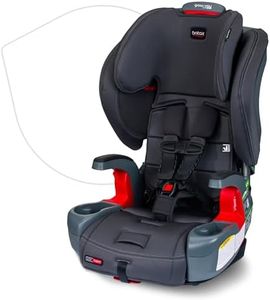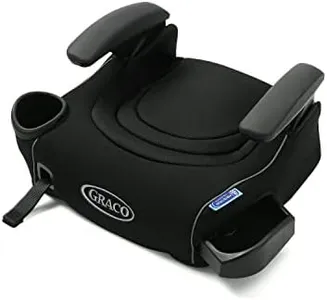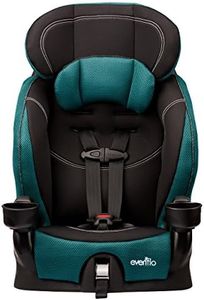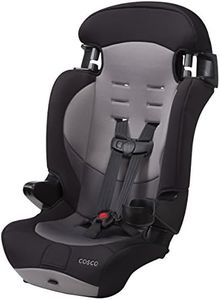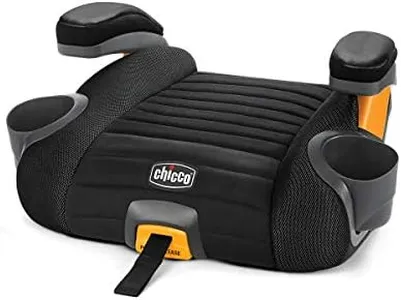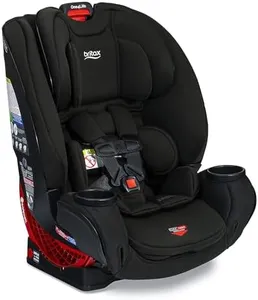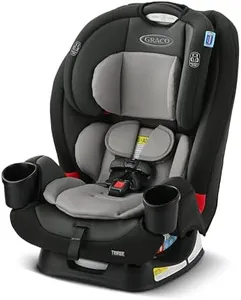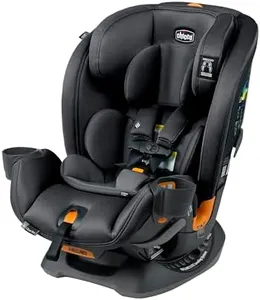10 Best Car Booster Seats 2025 in the United States
Our technology thoroughly searches through the online shopping world, reviewing hundreds of sites. We then process and analyze this information, updating in real-time to bring you the latest top-rated products. This way, you always get the best and most current options available.

Our Top Picks
Winner
Graco TurboBooster 2.0 Backless Booster Car Seat, Denton
Most important from
5592 reviews
The Graco TurboBooster 2.0 Backless Booster Car Seat, Denton, stands out as a high-rated choice among car booster seats. It's designed for children aged 4 to 10 years, accommodating weights from 40 to 100 pounds and heights up to 57 inches, making it suitable for a broad age and size range. The forward-facing orientation and installation using a seat belt ensure it fits most vehicles easily. One of the key strengths is the Graco ProtectPlus Engineering, which offers robust protection in various crash scenarios, providing peace of mind regarding safety.
The seat's height-adjustable armrests enhance comfort, and the proper seating position it offers ensures the seat belt fits correctly on your child. Additionally, the modern design and hide-away cup holders add convenience and a sleek look. It's been tested for extreme temperatures and meets or exceeds US safety standards, making it a reliable choice. However, the seat is backless, which may not offer as much support as high-back boosters, and it lacks a harness system, so it's reliant on the vehicle's seat belt for restraint.
At 5.15 pounds, it's lightweight, which is convenient for moving between vehicles, but some may find it less sturdy compared to heavier models. If ease of cleaning is a priority, the polyester material should be easy to wipe down, though it might not be as comfortable as other fabrics. This booster seat is ideal for parents seeking a safe, comfortable, and stylish option for their growing child, as long as the backless design fits their needs.
Most important from
5592 reviews
Graco Tranzitions 3 in 1 Harness Booster Seat
Most important from
25329 reviews
The Graco Tranzitions 3 in 1 Harness Booster Seat is designed to adapt as your child grows, offering three modes: forward-facing harness for toddlers (22-65 lbs), highback booster (40-100 lbs), and backless booster (40-100 lbs). This versatility ensures it can be a long-term investment for parents. The Simply Safe Adjust Harness System allows easy adjustments of the headrest and harness in one motion, which is convenient for busy parents. The seat is lightweight and portable, making it suitable for families on the go.
The 8-position adjustable headrest ensures comfort and proper fit as your child grows. Safety is a top priority with the Graco ProtectPlus Engineering, which passes stringent crash tests for frontal, side, rear, and rollover accidents. Additionally, it meets US FMVSS 213 standards for frontal crash tests. Cleaning is relatively easy with machine-washable seat pads, body support, and harness covers. Two cup holders provide added convenience for snacks and drinks.
However, the seat may not be suitable for rear-facing needs since it is forward-facing only. With a weight of 17.19 pounds, it is moderately heavy, which might be a consideration for some users. The Graco Tranzitions has garnered positive reviews, with a 4.7 out of 5 stars rating from over 25,000 users, reflecting its reliability and user satisfaction. This booster seat is ideal for parents seeking a versatile, adjustable, and safe seating option for their growing child.
Most important from
25329 reviews
Chicco KidFit ClearTex Plus 2-in-1 Belt-Positioning Booster Car Seat, Backless and High Back Booster Seat, for Children Aged 4 Years and up and 40-100 lbs. | Obsidian/Black
Most important from
10308 reviews
The Chicco KidFit ClearTex Plus 2-in-1 Belt-Positioning Booster Car Seat is designed for children aged 4 years and up, weighing between 40-100 lbs. It serves as both a high back and backless booster seat, offering flexibility as your child grows. The seat's standout feature is its DuoGuard protection, which provides robust head and torso support, along with a 10-position height adjustment from the waist for enhanced safety and comfort.
This booster seat is particularly easy to install and transfer between vehicles, thanks to its premium LATCH connectors and SuperCinch one-pull tightener, which ensure a secure fit. Additionally, the quick-release LATCH makes it convenient for one-hand removal. The ClearTex fabric is free from added chemicals and meets federal flammability standards, ensuring your child's safety without compromising on health. The seat is also very user-friendly with its machine washable fabrics, including removable armrests, making cleaning a breeze.
Comfort is another strong point, with a contoured ErgoBoost seat featuring double foam padding and two foldable, dishwasher-safe cup holders. The Chicco KidFit is designed to grow with your child, offering a 2-position recline backrest for high back mode and the option to convert to a backless booster for older children. However, some may find the LATCH installation system a bit tricky initially, and the booster seat might feel bulky in smaller vehicles. Despite these minor drawbacks, this booster seat excels in safety, comfort, and convenience, making it a solid choice for parents seeking a reliable and adaptable solution for their child's car travel needs.
Most important from
10308 reviews
Buying Guide for the Best Car Booster Seats
Choosing the right car booster seat for your child is crucial for their safety and comfort during car rides. A booster seat helps position the seat belt correctly on your child's body, ensuring they are protected in case of an accident. When selecting a booster seat, consider factors such as your child's age, weight, height, and the type of vehicle you have. Here are some key specifications to help you make an informed decision.FAQ
Most Popular Categories Right Now
